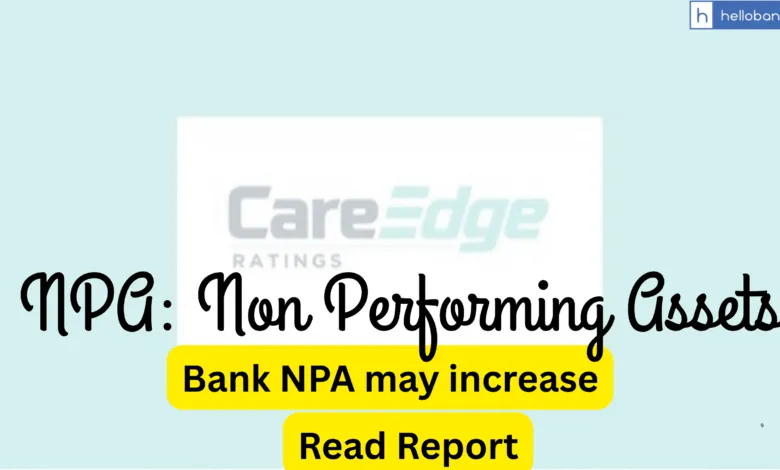Gross NPA of Banks may Increase this Year: Care Edge Ratings

| ➡️ Get instant news updates on Whatsapp. Click here to join our Whatsapp Group. |
In recent years, the asset quality of Indian banks has improved significantly. This means that the number of loans that are not being repaid (known as Non-Performing Assets or NPAs) has come down. The banking sector saw this improvement mainly because of lower fresh bad loans, better recoveries, and high write-offs by banks.
However, as we move into the financial year 2025–26 (FY26), experts believe that the situation might worsen slightly. This is because certain types of loans, especially unsecured personal loans and microfinance loans, are becoming risky. These are loans given without any security, and if the borrower fails to repay, the bank cannot recover the money easily.
In the past, especially between 2014 and 2018, banks were dealing with a high number of bad loans due to big corporate loans going bad. These loans caused the Gross NPA (GNPA) ratio to rise from 3.8% in 2014 to as high as 11.2% in 2018.
This forced banks to make large provisions (money set aside to cover losses) and write off many loans. To avoid such situations again, banks started giving more loans to individual customers (retail loans) instead of large companies. This shift increased the share of retail loans from 19% in 2015 to 34% in 2025.
As of the end of FY25, the overall GNPA ratio had dropped to 2.3%, which is a good sign. But there is still concern, especially in private sector banks. These banks give more personal loans, credit card loans, and other unsecured loans, which are now showing signs of stress.
This has resulted in higher slippages (new NPAs) for private banks compared to public sector banks. Going forward into FY26, it is expected that fresh bad loans will increase slightly, and the amount of money recovered from old bad loans will reduce. This means that the GNPA ratio could rise slightly to about 2.3% to 2.4%.
Looking at sector-wise performance, the agriculture sector has shown improvement. Its GNPA ratio fell from 10.1% in March 2020 to 6.2% in December 2024. The industrial sector has also seen a major improvement, dropping from 14.1% in March 2020 to just 2.7% in December 2024.
Retail loans—such as personal loans, education loans, and credit card bills—had a low GNPA of 1.2%, but this segment is expected to face more stress in FY26 due to rising unpaid dues in unsecured loans. Services sector loans had a GNPA ratio of 2.3% in December 2024.
One key concern is the rising level of household debt in India, which stood at 42.1% of GDP in December 2024. Although this is still lower than other emerging markets, it has been increasing steadily. Many low-income or sub-prime borrowers have taken loans mainly for consumption, such as buying gadgets or managing daily expenses.
These borrowers are more likely to default. On the other hand, high-income borrowers have used loans for creating assets like houses. As the stress in unsecured loans increases, especially in the first half of FY26, banks may see a rise in NPAs from these loans.
During the COVID-19 pandemic, banks restructured many loans by changing their terms temporarily. These were called “restructured standard assets.” Now, the number of such loans is reducing as they either get repaid or turn into NPAs.
Overall, the total amount of stressed loans (bad loans plus restructured loans) is going down. Public sector banks have been proactive in building strong financial cushions (called provision coverage), with ratios between 75% and 80%. Private sector banks also have decent provision coverage, around 74%.
Due to lower bad loans and fewer provisions required, banks have seen better profits. The credit cost (the amount banks spend to cover loan losses) has come down from 0.86% in FY22 to 0.47% in FY24 and 0.41% in FY25. However, this may increase again in FY26 due to fresh stress in unsecured loans and microfinance segments.
According to Sanjay Agarwal, Senior Director at CareEdge Ratings, while bad loan additions have remained low so far, the stress in personal loans is expected to rise, and recoveries will slow down. As a result, the GNPA ratio may slightly increase from 2.3% in FY25 to between 2.3% and 2.4% in FY26.
There are also risks that could make the situation worse, such as high interest rates (which make loan repayment more difficult), changes in RBI regulations, and global issues like trade tariffs. In summary, while Indian banks are currently in a strong position, they need to stay cautious, especially with rising stress in the retail loan segment.
